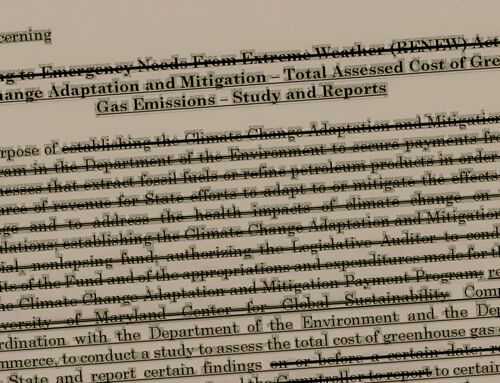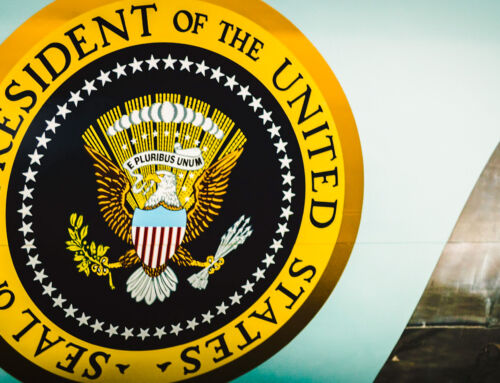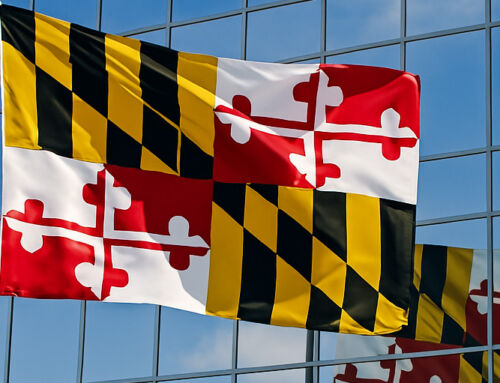View by Topic
Recent Articles
-
New Environmental Laws from the 2025 Maryland Legislative SessionSaturday, April 26th, 2025
-
Migratory Bird Treaty Act Does Not Prohibit Incidental Take – AgainSaturday, April 19th, 2025
-
President Trump’s Bold Step to Rein in State Overreach in Climate ChangeSaturday, April 12th, 2025
-
Mandatory GHG Disclosures in Maryland Real Estate ContractsSaturday, April 5th, 2025
View by Month/Year
“Green Building Law Update” Headlines
Recent Articles & News from
Stuart Kaplow’s blog
at GreenBuildingLawUpdate.com
- BEPS Redux: The Most Far Reaching Environmental Legislation of the 2025 Maryland General Assembly May 4, 2025
- New Environmental Laws from the 2025 Maryland General Assembly Session April 27, 2025
- Migratory Bird Treaty Act Does Not Prohibit Incidental Take – Again April 20, 2025
- President Trump’s Bold Step to Rein in State Overreach in Climate Change April 13, 2025
Subscribe to the Green Building Law Update!
Stuart Kaplow brings his expertise and extensive experience to the table with his unique digital publication, "Green Building Law Update". Subscribers receive regular updates to keep them informed about important issues surrounding Environmental Law, Green Building & Real Estate Law, as well as the emerging demand for Environmental Social Governance (ESG).
Get fresh content through the lense of Stuart Kaplow's cutting-edge expertise, innovative commentary and insider perspective. Don't miss another issue! Subscribe below.

Zero Waste in an Era of Net Zero Everything
Despite that the Zero Waste movement peaked in about 1998, in the modern context of Net Zero from Net Zero Energy to Net Zero Carbon, we are today with surprising frequency asked about a business being able to claim it is Zero Waste.
In a widely accepted definition, Zero Waste is,
“The conservation of all resources by means of responsible production, consumption, reuse, and recovery of products, packaging, and materials without burning and with no discharges to land, water, or air that threaten the environment or human health.”
Despite that this definition does not expressly state that Zero Waste is ”a goal” to guide behavior as opposed to an achievable absolute, earlier definitions did, including the first approved definition by the Zero Waste International Alliance. Working toward a world without waste is unquestionably a worthy mission.
But regular readers of this blog will know that we believe any business claiming “zero” anything is indefensible, fraught with risk and likely to lead to litigation. By analogy, nearly all businesses choose to include a warning label that nearly everything from a padlock, to jewelry, to a dish to a flashlight may cause cancer, to comply with California law that defines “no significant risk” (.. a lot less than zero risk) as a level of exposure that would cause no more than 1 extra case of cancer in 100,000 people over a 70 year lifetime.
No company should claim to be Zero Waste.
There is a lot of waste out there. Numbers are hard to come by and made even more difficult during the pandemic, but a recent presentation to the World Bank estimated more than 2 Billion tonnes of solid waste (.. actually municipal waste not including in water or air) was disposed of last year. Accurate recycling rates are not available and even those that are available are suspect, but it is widely claimed that only 9% of plastic (one of the most reused materials) is recycled. So, reducing waste is a good thing. But it is not easy.
Governments in the U.S. that collect most of the solid waste have tried to outlaw waste, including the San Francisco Mandatory Recycling and Composting Ordinance which may have been the first such municipal ordinance in the country and with the nation’s highest diversion rates one of very few that have worked at all. But that success may owe itself more to he law’s roots in the creation of the City’s Scavengers Protective Union in 1879, than any modern effort at repairing the world.
There have been valiant attempts at popularizing conservation of resources including, “Cradle to Cradle” trademarked by McDonough Braungart Design Chemistry, and also the name of their book, introducing as far back as 1991 the idea that cradle to grave (or landfill) should be replaced with cradle to cradle where at the ends of their lives, products are recycled into new products, so that ultimately there is no waste, but that is where the manifesto fails when is claims waste need not to exist at all. Bill McDonough and Michael Braungart later acknowledge flaws in their reasoning in their not nearly as popular follow up book, The Upcycle. Their ideas never scaled and much of their work was transferred to the Green Building Certification Inc., who incorporated it into some LEED credits.
But there are reasonable paths many businesses can pursue while mitigating risk. A company could claim it is certified under the GBCI True Certification program where “a TRUE project’s goal is to divert all solid waste from the landfill, incineration (waste-to-energy) and the environment.” The TRUE Certification program is a third party assessor based program that rates how well a company or its facilities perform in minimizing their non-hazardous solid wastes and maximizing their efficiency in the use of resources. And there are other third party verified programs, but we suggest GBCI’s TRUE is efficacious in helping a company achieve its Zero Waste goals.
That said, focusing on waste alone is a very much last millennium idea involving only one late stage of life cycle analysis at a time when doing less harm is not good enough for most companies. In 2022, business needs to move faster and farther toward repairing the world.
All of that observed, Zero Waste should not be relegated to a 20th century ash heap when the conservations of resources is a key factor in ESG allowing a company to implement their goals for managing risk, saving money, reducing pollution, decreasing greenhouse gas emissions, and reinvesting resources locally, all adding value for the company, its community and the world.
ESG has become such a large component of my law practice that I am now collaborating with a group of daring, innovative and creative attorneys in ESG Legal Solutions, LLC, a boutique ESG driven non-law and consulting firm “powering sustainability, today, for tomorrow’s business.” Nancy Hudes and I are now publishing a blog www.ESGLegalSolutions.com (.. yes, this website will continue). This article originally appeared in that blog. If we can assist you or someone you work with in ESG strategy and solutions, from specific project implementation to fractional fully managed services, do not hesitate to reach out to me.









